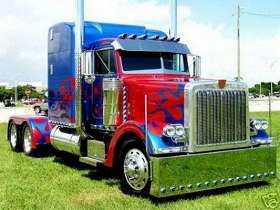GPS On Your Truck Equipment
Topic 13705 | Page 2
Boomshaker E.'s Comment

9 years, 5 months ago
Lots of good info. Thanks everyone.
New Reply:
New! Check out our help videos for a better understanding of our forum features
Bold
Italic
Underline
Quote
Photo
Link
Smiley
Links On TruckingTruth
Done

















Done
0 characters so far - 5,500 maximum allowed.
Notify Me Of New Comments
Submit
Preview
Preview:
Submit
Cancel








 TT On Facebook
TT On Facebook
Dutch wrote:
Great post Dutch. This is almost to the letter, what I do if I am routed to an unfamiliar stop or if the route from one stop (Walmart Store) to the next is unfamiliar. The only time(s) I have issues with the Qualcomm's GPS system is if I need to go out-of-route. If that occurs then defer to Dutch's instructions; "know when to ignore the GPS". If it tells you to make a left onto what is obviously a tree-lined, residential street, don't do it. Or if it tells you to proceed onto a street that prohibits truck traffic, don't do it.
The GPS used in combination with the Rand McNally Trucker's Road Atlas and directions provided by the company/shipper (if provided), is the best approach for safely navigating a trip route.
Shipper:
The customer who is shipping the freight. This is where the driver will pick up a load and then deliver it to the receiver or consignee.
Qualcomm:
Omnitracs (a.k.a. Qualcomm) is a satellite-based messaging system with built-in GPS capabilities built by Qualcomm. It has a small computer screen and keyboard and is tied into the truck’s computer. It allows trucking companies to track where the driver is at, monitor the truck, and send and receive messages with the driver – similar to email.Dm:
Dispatcher, Fleet Manager, Driver Manager
The primary person a driver communicates with at his/her company. A dispatcher can play many roles, depending on the company's structure. Dispatchers may assign freight, file requests for home time, relay messages between the driver and management, inform customer service of any delays, change appointment times, and report information to the load planners.OWI:
Operating While Intoxicated